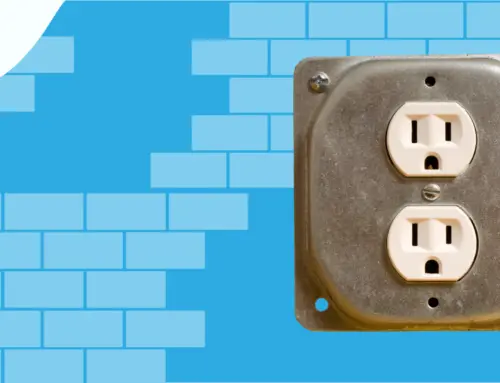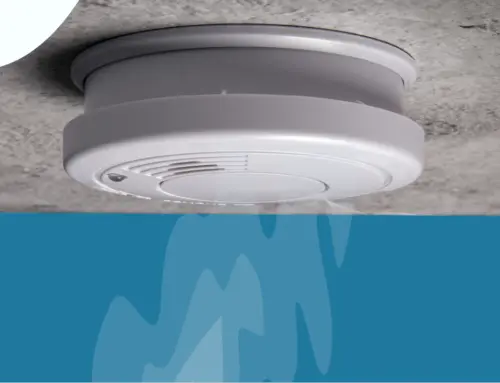Understanding Fixed Rate and Flat Bill Energy Plans
by Greg Rabaey
6.3 min read

If you’ve been in the hunt for a new energy plan, you’ve probably heard the terms “Fixed–Rate” or “Flat–Fee” as options for your energy choice. But what exactly does that mean and what’s the difference between both? While Fixed Rate energy plans remain popular, the flat–fee (or as some energy providers refer to this as unlimited energy usage) has also grown in popularity among energy consumers. It’s crucial to grasp the distinctions between Fixed Rate and Flat-Fee energy plans since choosing the right plan can help aid your energy needs and goals. Here are some key concepts to know to help you choose the best plan for you:
What is a Fixed–Rate energy plan?
A Fixed Rate energy plan gets its name because the rate you pay per ccf/therm or kWh remains the same (or “fixed”) for the duration of the contract with the energy supplier. You can lock in an energy rate for a set period of time and avoid any potential increases in the market price of electricity and natural gas. Regardless of changes in market supply and demand, inflation, or extreme weather for example.
What are the Benefits of a Fixed-Rate Energy Plan?
Price Stability: The most significant advantage of a fixed energy plan is that it provides price stability. You won’t have to worry about fluctuations in energy prices, even if there are sudden spikes in the market.
Predictability: With a fixed rate, you’ll have a clear understanding of your monthly energy bills, which makes it easier to manage your finances and plan for the future.
Protection from Seasonal Fluctuations: Some regions experience significant seasonal variations in energy prices due to factors like weather conditions. Fixed-rate plans shield you from these fluctuations.
What are the Disadvantages of a Fixed-Rate Energy Plan?
While fixed-rate energy plans offer several advantages, they also come with some disadvantages and potential drawbacks.
Potentially Higher Initial Costs: Fixed-rate plans may have higher initial costs compared to variable-rate plans or market-based pricing, especially when energy market prices are low.
Limited Flexibility: Fixed-rate plans offer less flexibility when it comes to taking advantage of changing market conditions. You may be locked into a set rate for an extended period, which can be a disadvantage if market prices drop significantly.
Potential Overpayment: In some cases, consumers on fixed-rate plans may overpay for their energy, especially if the contracted rate is set well above prevailing market prices. This can result in higher bills over time.
What is a Flat-Fee energy plan?
A flat-fee plan, often times known as an unlimited energy plan, is a cool twist on the regular Fixed–Rate energy plan. With a flat-fee plan, your supply portion of your bill remains the same each month. Much like an unlimited cell phone plan, you pay a set monthly supply price that doesn’t depend on how many units of ccf/therm or kWh you consume; the only thing that can potentially fluctuate are your utility fees and taxes.* The flat-fee energy plan is popular for consumers seeking easier energy budgeting and simplified monthly billing for your supply cost.
What are the Benefits of a “Flat” Energy Plan?
Flat-rate energy bills offer several advantages for consumers:
Predictable Monthly Expenses: Apart from changing utility fees and taxes, a flat-fee plan ensures you pay the same supply cost amount every month, no matter how much energy you use. * This predictability makes budgeting and financial planning much simpler.
No Surprises: You won’t be affected by fluctuating energy prices, seasonal variations in energy consumption, or unexpected price hikes. Your supply bill remains consistent throughout the year, eliminating the stress of unexpected cost increases.
No Need for Close Monitoring: With a flat-fee plan, you don’t need to constantly monitor your energy consumption or make adjustments to your usage. Flat-fee plans can be virtually unlimited with energy use. *
What are the Disadvantages of a “Flat” Energy Plan?
While flat energy plans offer several advantages, they also come with some disadvantages that consumers should consider:
Potentially Higher Costs: Flat-fee plans can charge a monthly supply cost, which may not be cost-effective for some households.
Availability Constraints: Flat energy plans might not be offered by all energy providers or may only be available in certain areas. This can limit your options and make it challenging to find a suitable plan if you prefer a flat-fee structure.
Lack of Price Advantage in Low Market Conditions: Flat-fee plans do not provide the opportunity to take advantage of low energy market conditions. While flat-rate plans shield you from price increases, they also prevent you from capitalizing on potential cost savings during periods of low energy prices.
What to Keep in Mind Regardless of Your Plan Choice
No matter if you’re choosing a fixed-rate or flat-fee plan for your electricity or natural gas supply, it’s important to note that your fixed-rate or flat-fee plan applies to your supply charge only. Whether your needs are with natural gas or electricity, there are other fees in your fixed-rate or flat-fee plans that can vary month-to-month and can be dependent on usage amounts, such as taxes, fees and surcharges. Regardless of if you receive your service through a supplier, these utility charges will still apply separately. Keep in mind, that some utilities or suppliers may charge a flat monthly fee in correlation with the rate, sometimes referred to as a subscription fee or admin fee. Lastly, specifically with flat-fee plans, don’t forget that even though your supply charge remains the same, there still could be other fees associated with your plan assessed by the utility. Be sure to read your contact details and ask your provider about any extra charges before you switch.
Fixed Rate and Flat Energy Plans – What’s the Better Choice for You?
In the end, the answer is truly up to the energy consumer to decide. It often depends on how you like to budget for your home energy costs. A key thing to remember is that depending on where you live and your weather conditions, you will probably use more natural gas in some months, and less in other months. The same could be said about electricity usage which means your energy consumption will fluctuate. Another thing to consider when choosing between these two plans is your household size as it plays a role in your overall energy consumption, what your rate will be, and if plans are available for your house’s size. So, take a moment to weigh these factors and make the decision that aligns best with your budget and lifestyle.
Choosing an energy plan doesn’t have to be complicated or challenging. With the right tools and information, you can make the best choice for you and your lifestyle! If you’re looking for more advice on how to choose the perfect energy plan for you, download our eBook about everything you need to know about choosing an energy plan now!
Santanna Energy Services is a supplier of renewable energy solutions in the United States, providing services to Illinois, Indiana, Pennsylvania, Michigan, and Ohio. We provide a wide range of energy services and products to meet the needs of both residential and small business customers. Our mission is to provide innovative and cost-effective energy solutions that will help our customers achieve their energy goals. With over 35 years of experience, we are committed to creating life-long relationships by providing quality service to customers, communities, and employees.
* Restrictions apply. Enrollment is based on program eligibility. Customers using more than 125% of normal monthly usage as determined by Santanna may be required to switch plans.
Greg Rabaey, the CEO of Santanna Energy Services, is a forward-thinking leader with a wealth of experience in the energy industry. With a solid educational foundation in mathematics, computer science, and physics, including a Ph.D. in Physics from the University of Arizona, Greg's career spans over 30 years in technology and energy. Under his guidance, Santanna Energy Services has evolved into a consumer-centric powerhouse, providing electricity and natural gas to countless homes across the Midwest. Greg's strategic acumen, deep commitment to his team and customers, and passion for innovation have been instrumental in the company's growth. His visionary leadership has led Santanna to become an industry innovator, offering a range of earth-friendly and unlimited energy options, setting new standards in environmentally conscious energy solutions for clients. Beyond the boardroom, he actively contributes to his community, embodying his dedication to driving positive change, both professionally and personally.







